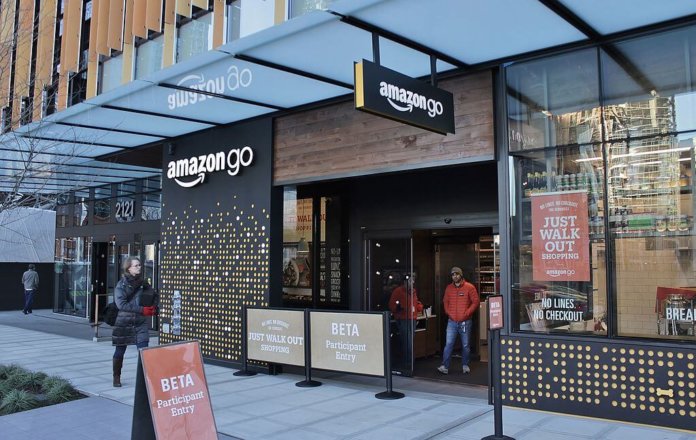
Imagine the following scenario. You’re doing some routine grocery shopping when you notice someone has walked into the store, filled their shopping basket with various grocery items and then walks straight out of the store without so much as glancing toward a checkout aisle.
What would you do? Try to stop them from leaving? Alert store security? Call the police? If you happen to be in an Amazon Go store, the answer is none of the above.
The Revolution of Amazon Go
Amazon Go is a futuristic shopping experience that is about to become available to consumers where there is no checkout line required. Customers simply scan in with their Amazon Go smartphone app, take items off the shelves and then walk out of the store. The items they selected are automatically charged to their Amazon account.
According to the company’s website, the idea has been in the works since 2012.
“Four years ago we asked ourselves: what if we could create a shopping experience with no lines and no checkout? Could we push the boundaries of computer vision and machine learning to create a store where customers could simply take what they want and go?”
It is the advances in technology that really made this retail experience possible. The operation works with the same high-tech camera systems that are behind autonomous cars. As soon as a customer scans in, they are tracked throughout the store. When they reach for something on the shelf, the system is so precise, it can detect if they put it in their cart or put it back on the shelf. The process was detailed in the company’s patent application.
“When the user’s hand is removed from the inventory location, one or more images may be captured of the user’s hand as it exits the inventory location. Those images may be compared to determine whether a user has picked an item from the inventory location or placed an item in the inventory location.”
Groceries Go Digital
Interestingly, the market forces that drove this revolution were not other grocery chains, but rather the growing popularity of meal kit delivery companies such as Blue Apron. People who want to make specific dishes at home love the idea of having all the items selected for them. However, problems arose when the shipping costs were making the venture not worthwhile for both the company and their customer base. With Blue Apron, customer retention data showed that only 10% of customers were sticking with the service after six months.
Enter Amazon Go.
This retail service offers the ease of online and the ability to recommend and customize grocery orders without the high cost of shipping. Of course, it does not include the convenience of having it delivered to your door but Amazon is betting that by eliminating ling checkout lines, they have created a fast, convenient retail system customers will embrace.
The obvious drawback is it is only worthwhile if there is a store in your general area and after a rumour got out that Amazon was building 2,000 of these stores, the company was quick to quash it.
“We have no plans to open 2,000 of anything. Not even close. We are still learning,” Amazon spokeswoman Pia Arthur recently told CNBC.
While nobody can say for certain when these stores will be available to the masses, it’s clear it won’t long. Before you know it, the idea of getting to an automated grocery store in your self-driving car will not just exist in the realm of sci-fi.
The future is (almost) now.









